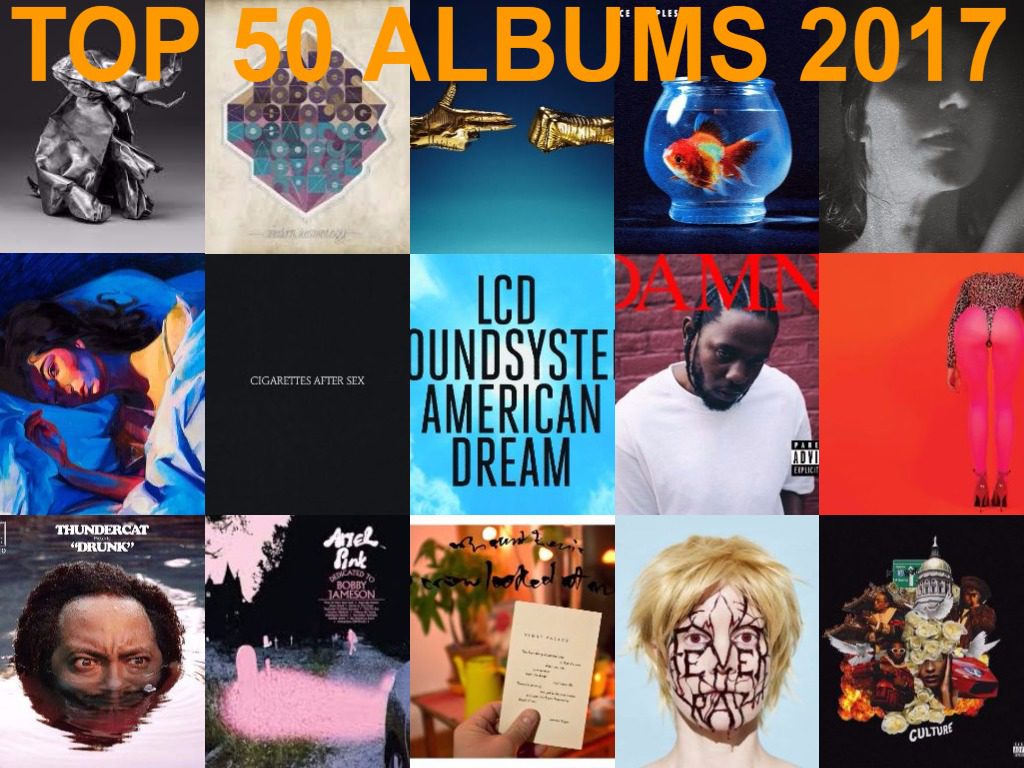
Every year they arrive earlier! The habitual recap of the best music of the year, due to the pressures of internet, has become a race against the clock to be the first on delivering it. November hasn’t finished yet and most of the UK’s most relevant lists are already out. To be fair, 2017 has made it quite easy for this to happen. The latest high profile (scheduled) release came last Friday with Björk‘s divisive ‘Utopia.’ December increasingly looks like the realm of seasonal compilations and little else. So, unless the latest works by Neil Young or Miguel -unlikely- dazzle the critics; Migos‘ recently announced second volume of their acclaimed ‘Culture’ reaches the heights of their first one or -even more unlikely- someone else –Kanye?– tries to pull a Beyoncé to cash on the lucrative sales of the week before Christmas, 2017 is ready to be wrapped up.
Good news first, for the music industry this is has been a year of recovery. The streaming services are beating records and generating profits for the (big) labels unheard of in decades. Creatively, though, popular music is telling a very different story, the one of a medium that has reached rock bottom after years of diminishing returns.
As far as new ideas go, electropop fatigue has left both pop stars and electronica mavericks orphans of their bigger source of sonic trickery, with the usual trendsetters looking in desperation for other genres and styles to “revisit” and going as far as the New Age for inspiration. Suddenly and irresponsibly the gates were open again for the much maligned 80’s genre. Andean devices; healing bells; exotic flutes and pseudo-spiritual vocal arrangements were released from their confinement in the kingdom of airline commercials, spreading frightening waves of dullness among the most exquisitely innovative musicians of several generations. In stark contrast, the most genuinely daring record of the year did not belong to any of those usual suspects. It was conceived in Gary, Indiana by a relatively unknown electronica musician Jerrilynn Patton, better known as JLin, who expanded the syncopated rhythms of footwork to impressive effect.
The other big casualty of a decade of “crisis” seems to be the rock band. The relatively few new ones, mostly attempting to recoup jaunty Britpop choruses or angst-ridden sounds of US grunge, have failed miserably to leave any imprint upon the legacy of those 90’s trends. Judiciously, audiences and festival circuit have been increasingly betting on the returns of well established names, which are now so numerous that is rather difficult to differentiate a bill from the best indie festivals Today from its equivalent twenty years ago. In 2017, some of those comebacks, from Slowdive to Queens Of The Stone Age, have generated a few of our favourite records of the year. And reigning supreme above all James Murphy, who reformed LCD Soundsystem after a decade-long hiatus for a record that deals with the depression of getting old and coping with not being the hipster-du-jour anymore. However frivolous it sounds, Murphy and co have managed to painlessly jump into the mainstream in style, with a Billboard Number one album, one of the tours of the year and a collection of songs that stands out proudly in their discography. Yet for every successful comeback, there have been many not so promising, including the ones by Ride, The Jesus and Mary Chain who began with spectacular live shows but whose records disappointed. St. Etienne; Fleet Foxes; Grizzly Bear; Luna; Beck; Spoon; The Shins are also among many favourites who offered records which did not stand well in comparison with their former glories. The gold in that painful category, though, went to Arcade Fire, for giving us the first serious misstep of their career.
But if young bands are finding it difficult to stand against the stronger brands of their veteran counterparts, perhaps as a reflection of millennials’ individualism, the number of young singer-songwriters -particularly female ones- seems to be booming, among them Circuit Des Yeux; Phoebe Bridges; Waxahatchee; Julie Byrne; Margo Price; Vagabon; Julie Byrne or Nadia Reid, with New Zealand being the cradle of two of the most notable, Aldous Harding and Lorde. In the US, the offering by more seasoned scribes feature the latest by Phil Elverum, under his Mount Eerie moniker, who has crafted a heartbreaking study of bereavement. As well as those by Perfume Genius; St. Vincent; Big Thief or The Magnetic Fields‘ epic “50 Track Memoir.’
Among the harder to classify, British avant-pop chanteuse Jane Weaver somehow recalled the spirit of Stereolab in her krautrock-infused latest (and best) album; Thundercat further explored the grey area between fusion jazz and yacht rock; Fever Ray took her post-Knife antics to even crazier pastures; Ariel Pink remained in his lo-fi reincarnation of the 80’s and Sheer Mag almost sounded like his 70’s hard rock cousins. Cigarettes After Sex recalled the atmospheric sounds of Mazzy Star and Charlotte Gainsbourg channelled the grief of her sister’s death by fully immersing herself in his dad’s legacy.
This has not been the best year for R&B either, with only releases by Sampha; Kelela and the posthumous album by Sharon Jones & The Dap-Kings waving the flag of soul. Hip-hop, though, kept on being the source of most surprises, including unexpected returns to form by Jay Z and Tyler, The Creator. Really strong efforts by Run The Jewels; Lib B and Vince Staples also contributed. And far above all, in a level on his own, Kendrick Lamar continued to take the genre in multiple and surprising directions. And even if, like most of the albums of 2017, ‘DAMN.’ is not his best, culturally and musically is undoubtedly the one the year will be remembered for.

















































